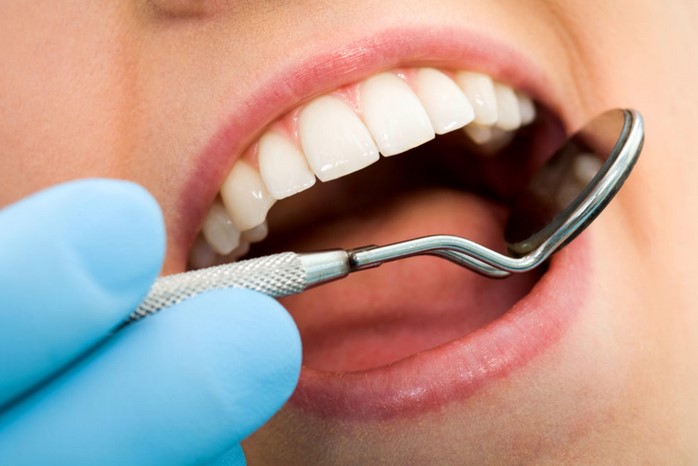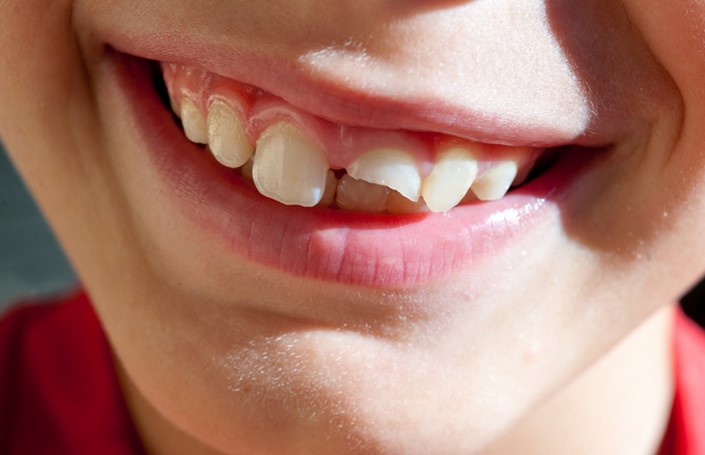
Dental emergencies can strike at any time, causing anxiety and discomfort. One such urgent dental issue is a cracked tooth, which can be a distressing experience even if it doesn’t immediately cause pain. A cracked tooth occurs when a tooth splits or fractures, compromising its structural integrity. While a cracked tooth might not hurt right away, it is crucial to address the situation promptly to prevent further damage and potential pain down the road. In this article, we will explore the different types of cracked teeth, potential causes, signs to watch for, and steps to take if you find yourself with a tooth split in half.
Understanding the Types of Cracked Teeth
Cracked teeth can manifest in various ways, each requiring a unique approach for treatment. Understanding the types of cracked teeth is vital to determine the appropriate course of action.
1. Craze Lines: These are tiny, superficial cracks that appear on the enamel, the outermost layer of the tooth. Craze lines are common and typically don’t cause pain. They are mostly considered a cosmetic concern, but if they accumulate stains, they can become noticeable.
2. Fractured Cusp: This occurs when a small piece of the tooth’s chewing surface breaks off. While this might not cause immediate pain, it can make chewing uncomfortable. A fractured cusp is usually addressed by placing a dental crown over the tooth.
3. Cracked Tooth: A cracked tooth is a more significant issue where a crack extends from the chewing surface toward the tooth’s root. This type of crack can cause discomfort, especially when chewing, as it exposes the sensitive inner layers of the tooth.
4. Split Tooth: A split tooth is the result of a more advanced crack that has divided the tooth into distinct segments. This type of crack often requires extraction or more complex dental procedures.
5. Vertical Root Fracture: This type of crack starts at the tooth’s root and extends upward. It can be challenging to diagnose and often leads to infection, requiring extraction.
Potential Causes of Cracked Teeth
Understanding the causes of cracked teeth can help you take preventive measures to avoid such situations.
1. Biting into Hard Objects: Chewing on hard objects like ice, pens, or hard candies can exert excessive force on the teeth, leading to cracks.
2. Trauma: Accidents, falls, or sports injuries can result in cracked teeth. Even if the crack doesn’t hurt initially, it’s crucial to seek dental attention to prevent complications.
3. Grinding and Clenching: Bruxism, the habit of grinding or clenching teeth, can weaken tooth enamel and lead to cracks over time.
4. Uneven Chewing Pressure: If you have an uneven bite, some teeth may endure more pressure while chewing, making them more susceptible to cracks.
5. Large Fillings: Teeth with large fillings are more prone to cracking because the remaining tooth structure around the filling is weaker.
Recognizing the Signs of a Cracked Tooth
Identifying the signs of a cracked tooth, even if it doesn’t hurt, is essential to prevent the situation from worsening:
1. Sensitivity: You might experience increased sensitivity to hot, cold, or sweet foods and beverages.
2. Discomfort While Chewing: Chewing can cause discomfort or pain in the cracked tooth due to the pressure applied to the crack.
3. Intermittent Pain: You might feel occasional sharp pain that comes and goes, making it challenging to pinpoint the source.
4. Swollen Gums: If the cracked tooth has led to an infection, you might notice swollen gums around the affected area.
Steps to Take If You Have a Cracked Tooth
Dealing with a cracked tooth, even if it doesn’t hurt, requires prompt action to prevent further damage:
1. Rinse Your Mouth: Clean your mouth gently with warm water to remove any debris. This will help you assess the damage more clearly.
2. Apply Cold Compress: If there’s any swelling, apply a cold compress to the outside of your cheek for 15 minutes to reduce inflammation.
3. Avoid Chewing on the Affected Side: To prevent exacerbating the crack, avoid chewing on the side with the damaged tooth.
4. Use Over-the-Counter Pain Relief: If you’re experiencing discomfort, you can take over-the-counter pain relievers following the package instructions. However, avoid placing aspirin directly on the tooth as it can damage the gums.
5. See a Dentist: Even if the crack doesn’t hurt, it’s crucial to see a dentist as soon as possible. A dentist will perform a thorough examination, potentially including X-rays, to determine the extent of the damage and recommend appropriate treatment.
Treatment Options
The treatment for a cracked tooth depends on the type and severity of the crack:
1. Bonding: For minor cracks, dental bonding can be used to fill and seal the crack, restoring the tooth’s appearance and preventing further damage.
2. Dental Crown: A dental crown may be placed over the cracked tooth to protect it and restore its function. This is common for larger cracks or fractured cusps.
3. Root Canal: If the crack has reached the tooth’s pulp (innermost layer), a root canal may be necessary to remove the damaged tissue and prevent infection.
4. Extraction: In severe cases, if the tooth is split beyond repair, extraction might be the only option. The dentist will discuss replacement options such as dental implants or bridges.
Preventing Cracked Teeth
Taking preventive measures can significantly reduce the risk of experiencing a cracked tooth:
1. Avoid Chewing on Hard Objects: Refrain from chewing on ice, hard candies, or non-food objects that can damage your teeth.
2. Wear a Mouthguard: If you grind or clench your teeth, wearing a mouthguard at night can help protect your teeth from excessive force.
3. Maintain Good Oral Hygiene: Brush and floss regularly to keep your teeth healthy and strong.
4. Visit Your Dentist: Regular dental check-ups can help identify potential issues early and address them before they become emergencies.
In Conclusion
Dealing with a cracked tooth emergency, even if it doesn’t hurt initially, requires swift action to prevent further damage and potential pain down the line. Different types of cracked teeth demand specific treatments, so seeking professional dental care is essential. By recognizing the signs of a cracked tooth, understanding the potential causes, and taking preventive measures, you can minimize the risk of experiencing this dental emergency. Remember, even the slightest crack should not be ignored, as timely intervention can save you from unnecessary discomfort and complex treatments in the future.
